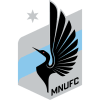This is not a drill, I repeat, this is not a drill. The 2022 MLS regular season starts this weekend.
The final stage of preseason is usually a time of hope, a time when you have the license to believe whatever you want about your team.
But with just a few days until MLS is Back, I’m going to pour a little cold water on you. Instead of looking at what might go right for your team this year, we’re here to talk about what your team should be a little nervous about at the start of this new season.
Last week, we looked at one statistic that each Eastern Conference team should worry about in 2022. This week, we’re moving on to the Western Conference.
Let’s get into it.
0.72 xG allowed per 90 minutes in transition
Austin FC strung together some lovely possession sequences last year, but they were leaky in defensive transition.
In 2021, they allowed 0.72 xG per 90 minutes in transition, which was the worst total in MLS. Adding Colombian central midfielder Jhojan Valencia to the squad should help, but if Austin want to improve on their 12th-place finish from last season, they’ll need a better counter-pressing approach in 2022.
7.5 xG from their leading attacker
It’s old news at this point, but the Colorado Rapids don’t have a regular goalscorer. In Michael Barrios (who led the team with 7.5 xG in open-play in 2021), Jonathan Lewis, Diego Rubio and Andre Shinyashiki, they have players who can score goals. But they don’t have the guy.
The Rapids earned 61 points and won the Western Conference without a dominant goalscorer last year – and if they want to finish near the top of the West this year, it looks like they’re going to have to score by committee again.
0.84 forward meters per touch
Just a couple of weeks ago, I wrote about how FC Dallas had an extremely valuable, flexible presence at left back. Well, uh, that presence is gone.
Dallas sent Ryan Hollingshead to LAFC in exchange for Marco Farfan on Feb. 10. Where Hollingshead finished 2021 in the 87th percentile in average defenders bypassed per touch among left backs and left wingbacks, Farfan finished in the 64th. And where Hollingshead finished in the 90th percentile in forward distance traveled per touch, Farfan finished in the 14th.
Dallas have more talent on their roster than in recent memory, but I have some questions about their left back situation. Maybe it's looking for a more defensive presence?
2.9 shots per 90 minutes from passes originating in key attacking zones
When looking for ways to improve Houston, new head coach Paulo Nagamura may want to examine his team’s chance creation struggles.
In 2021, the Dynamo created the fifth-fewest shots (2.9 per 90) from passes that originated in Zone 14 or the outer channels of the box.
Houston don't need to be a high-volume possession team in 2022 (they probably shouldn’t be), but they need to start moving the ball into the right spaces to give themselves creating scoring opportunities.
1.2 open-play xG allowed per 90 minutes
Only four teams gave up more xG from open play than the LA Galaxy in 2021.
The Galaxy’s 1.2 open-play xG allowed per 90 minutes hurt their ability to control games and played a big part in them missing out on the Audi MLS Cup Playoffs in Greg Vanney’s first season under center.
New signing Mark Delgado’s energy in midfield should help LA close some of their defensive gaps, but even with Delgado, the Galaxy will need to improve their defensive structure.
31.7 progressive passes per 90 minutes
LAFC will be a fascinating team to watch early on in 2022. I’m curious to see how Steve Cherundolo sets up his midfield and how he instructs his group to play.
Without Eduard Atuesta’s progressive passing ability (31.7 progressive passes per 90 minutes, 99th percentile among midfielders in MLS last year), does Cherundolo take LAFC even further down the vertical pressing route?
How much will things change depending on whether it’s Kellyn Acosta or IIlie Sánchez at the 6? I have questions. But either way, LAFC will miss Atuesta’s calming presence on the ball this year.
46% high pressing efficiency
Adrian Heath has plenty of attacking talent at his disposal, particularly in Emanuel Reynoso and Franco Fragapane. However, Minnesota may want to address what happens when they don’t have the ball.
Last season, the Loons pressed a lot – they were the sixth most active high pressing team in MLS. However, they weren’t very good at winning the ball when they pressed. Minnesota only forced a turnover within five seconds on 46% of their team-wide pressures in the final third, which put them in the 11th percentile last season.
To really fly in the West, MNUFC will need to up their pressing game.
1 open-play xG per 90 minutes
Nashville gobbled up the ball defensively in 2021 and were one of the league’s best teams in defensive phases.
That said, they have room to improve their on-ball play in 2022. Hany Mukhtar had a great year, but getting even more from other attacking pieces will be an important part of this team’s evolution.
Collecting more than the 1 open-play xG per 90 minutes they gathered last season (which put them 17th in MLS) will go a long way toward making Nashville SC even more dangerous as they enter the West.
23.7 backline-breaking passes allowed per 90 minutes
The Portland Timbers reached MLS Cup in 2021 and could’ve easily walked out of Providence Park with silverware.
If they want to maintain those levels this season, shoring up their defensive work will be critical. In addition to allowing the most xG while organized in 2021, the Timbers allowed the second most backline-breaking passes per 90 minutes.
Giving opposing teams that much access to valuable space in behind is a dangerous thing.
11 xG+xA
Albert Rusnák wasn’t Real Salt Lake’s most important player, but losing him to the Sounders in free agency does make Pablo Mastroeni’s life more challenging.
Rusnak and his 11 combined expected goals and assists are off to Seattle. Does RSL have enough quality to cover that lost attacking output? I’m not sure.
Maybe Damir Kreilach has another level to his game. Maybe Rubio Rubín can hit double-digit open-play goals. Maybe Sergio Córdova can be something special. Maybe.
1.9 forward meters allowed per touch
The San Jose Earthquakes have trouble controlling space defensively. With the man-marking defensive approach Matias Almeyda often relies on, San Jose can be pulled apart with a combination of well-coordinated off-ball movement and aggressive forward dribbling.
Last season, San Jose allowed the fourth-most xG in MLS and 1.9 forward meters per opposition touch, which was the second most distance allowed in the league.
They’ll need to do a better job of restricting space and movement if they want to make the playoffs in 2022.
8.3 possessions with seven passes or fewer that end a shot per game
Between Raúl Ruidíaz, Jordan Morris, Nico Lodeiro, Albert Rusnák and Cristian Roldan, the Sounders have plenty of talent in advanced positions. However, I’m curious about how that talent will 1) mesh together and 2) improve Seattle’s ability to create danger on quick attacking sequences.
On paper, Seattle’s 2021 attack should’ve been very good at turning quick possessions (ones with seven passes or fewer) into shots. In reality, though, they finished 13th in MLS last year by turning just 8.3 quick possessions into shots on a per-game basis.
Adding to that number in 2022 could make the Sounders even more dangerous than they have been in previous years.
1.6 key passes per 90 minutes
Losing Alan Pulido to a season-ending knee injury is a huge blow to SKC’s hopes for 2022.
Not only is Pulido an effective goalscorer – he finished in the 91st percentile in open-play xG per 90 minutes among players with at least 1,000 minutes last year – but he often acts as the connective tissue between Kansas City’s midfield and attack. Pulido’s 1.6 key passes per 90 minutes put him first in the league among No. 9s with at least 1,000 minutes.
Can Peter Vermes get his team humming without Pulido? Can Khiry Shelton or Nikola Vujnovic smooth over the loss? We’re going to find out.
7.7 post-shot expected goals
Though Vancouver have a promising young talent in Thomas Hasal at goalkeeper, by trading Maxime Crepeau to LAFC earlier this offseason, the Whitecaps sent one of the most effective shot-stoppers in MLS to a conference foe.
Per FBref, Crepeau had the best shot-stopping metrics in the league last season, saving almost 7.7 goals more than expected based on post-shot xG.
Vanni Sartini’s security blanket is gone, which could make his first full season in charge of the 'Caps a difficult one.


























